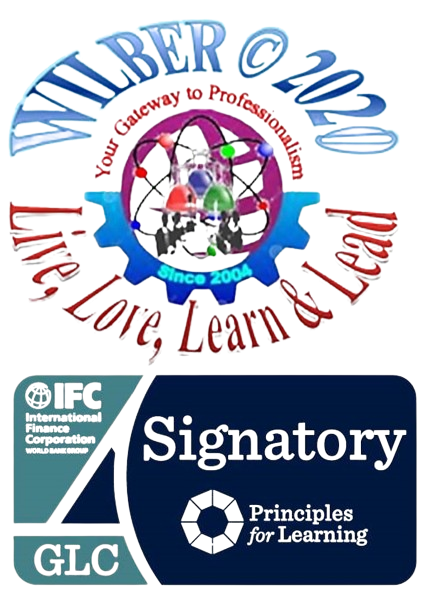The Syllabi





FURTHER INSTRUCTION TO THE COURSE:
1. Use only one (1) login/username account;
2. If you will be using other gadgets (meaning not yours) be sure to ask them (the owner, especially your classmate) to log out on this website so that your activity will be credited to you;
3. Always mark the “complete box” as soon as you finish the module. If you wish to review you can REVISIT YOUR ACTIVITY anytime.
4. NEVER start with the examination (or QUIZ) if you have an unstable connection or signal. Your activity will be counted as 1 attempt whether you finish it or not; Anyway, the activity may be repeated on a LIMITED BASIS.
5. Download your certificate if you pass. That would be the BASIS OF YOUR MARK/GRADE.
Read this! IMPORTANT
Further Tips for Distance Learning
THE E-LEARNING
Distance learning has special challenges. You will probably never see or meet the teacher. You won’t have classmates. You don’t have a campus full of people studying the same thing. But you can succeed! Plan on it! Follow the simple tips below, and you’ll do better in your learning. They may seem pretty basic, but they’ll help keep you focused and on track.

[1] Set Goals
-
- Goal #1: “I will succeed in this course.”
- At the beginning of a new course, look through the materials. Break the lessons/assignments into manageable chunks. You might not have time to do a full lesson in one (1) night (day or hour), so plan for how much you can do, then stick to it until you’re done.

[2] Establish a Regular Study/Learning Schedule
-
- Keep a calendar or journal with your study goals and important dates clearly marked-and look at it every day (a calendar can’t help you if it’s closed!)
- Determine what time is best for you to study. Is it after dinner on Wednesdays when your partner is at bowling? Is it Saturday mornings when the kids are at soccer?
- Take breaks-walk around and stretch. Drink some water or have a light snack. If you’re studying nutrition or health topics, you know how important this is!
- If possible, have a dedicated study place with all the supplies you might need(computer, paper, pens, calculator, etc.)
- Pace yourself. Don’t overextend yourself. There’s a reason it takes several days, weeks, or months in traditional face to face learning. You’re here to learn, not just to get a certificate or license, so make sure you’re learning, not just racing through the materials.

[3] Talk About It
-
- Tell people what you’re doing. You’re more likely to stick to a course if your co-worker knows you’re doing it. If you are studying high-tech or higher learning ask somebody about it, they can surely help you.
- Ask a friend to check up on you.
- Ask someone to prove your work before you submit it.
[4] Join a Study Group-This Doesn’t Have to be Stuffy!
-
- Join a club. A club whose endeavor is the same as yours. You will learn from them aside from online.
- Get a credible mentor or tutor. Take them for coffee or snacks at least twice a month and ask for a brainstorming. Their practical knowledge can help you understand your interests.
- Search the Internet for (be careful because not all posted on the internet are credible resources or references) bulletin boards or chat rooms related to your topic.
[5] Know Your Learning Style and Use It
-
- Look for real-world situations and examples of what you’re learning about. Observe, watch, and read real situations.
- You’ll be much more interested if you’re involved, not just reading about a topic.
- Put things into practice as early as possible.
- If you’re studying science, try to delve into that science.
[6] Celebrate Successes
-
- Reward yourself with whatever works for you, along the way. Remember, you chose to do this. Be proud of your accomplishments!

[7] Ask Questions
-
- If you don’t understand something, ASK. It’s been said a million times: the only dumb question is the one you don’t ask.
REMEMBER THIS
It’s not about memorizing – it’s about learning material that will help you in your hobbies, career, and life. MEMORIZATION isn’t a bad thing, but make sure you’re memorizing because you are really interested in the information, and figure out a way to use the memorized information several times within a few days of learning it. It’ll stick if it has real-world meaning.
THE MOOC (Massive Open Online Course)
A MOOC is an online course with the option of fee, free and open registration, a publicly shared curriculum, and open-ended outcomes. MOOCs integrate social networking, accessible online resources, and are facilitated by leading practitioners in the field of study. Most significantly, MOOCs build on the engagement of learners who self-organize their participation according to learning goals, prior knowledge and skills, and common interests.
However, it is not entirely clear when a course is or is not a MOOC, but there are a number of features that are typically required for a course to be considered a MOOC:
-
HERE ARE THE FEATURE OF MOOC:

-
Course
It should have some learning objectives to be achieved by students after certain activities within a given period of time (therefore, it should have a beginning and an end). In addition, it should have some quizzes and exams to assess the knowledge acquired by students. And there should be some kind of interaction between students and teachers in every possible way (student-student and student-teacher).
-
Open
Open has several meanings in MOOCs. On one hand, the course should be open to everyone and should not require some prerequisites such as possession of a qualification or a level of performance in earlier studies. On the other hand, the access to educational resources (videos, lecture notes) should be free or conditional (but other things, like being able to ask direct questions to the teacher, the correction of the activities, or obtaining a certificate at the end of the course may have an economic cost).
Open is also often interpreted as it does not make use of a closed learning platform, but educational resources are hosted in different places like websites, blogs, wikis, or multimedia repositories.
Finally, “open” is also often interpreted as the course makes extensive use of open content, and in turn, the content generated by the course is also published openly so it can be reused by others. This latter interpretation of “open” is the least fulfilled nowadays, as the most successful MOOCs are organized by companies, such as Coursera or Udacity, EDx, Harvard, and big Universities in the United States, Europe (Open University), and Australia who NOW have little interest in sharing their courses open because there is A FEE FOR EVERY COURSE.

-
Online
The course is done remotely via the Internet and does not require physical attendance in a classroom. This feature is essential for anyone from anywhere in the world with an Internet connection can participate in these courses.
-
Massive
It should allow access to a very large number of students, much larger than a face-to-face class, or a traditional online course. In addition, the course should be prepared to accept changes in the number of students in several orders of magnitude, without a major problem for the operation.
Classification of MOOCs
In the beginning, the first MOOCs (2008) had a strong and deep collaborative philosophy (cMOOCs), but this philosophy has evolved to a commercial sense (xMOOCs).
-
cMOOC
A cMOOC emphasizes the connectivist philosophy: it is a social platform for collaboratively sharing and building knowledge within a community of people.
-
xMOOC
-
An xMOOC relies on a more traditional model of education, based on lectures recorded in videos, and usually is well-financed.
WITH THAT INFORMATION, I GUESS YOU ARE NOW READY FOR YOUR COURSE THROUGH A BLENDED LEARNING COURSE! Move yourself more progress ahead than others! (WILBER2021)
END OF INTRODUCTORY PART
END OF SYLLABI – PROCEED TO PART 1


